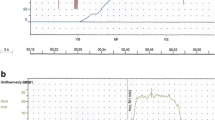Abstract
Pediatric urodynamics taught us that detrusor-sphincter dyssynergia creates a bladder outlet obstruction in about 50% of any population of children with myelomeningocele. This functional obstruction causes renal damage due to obstructive uropathy, exactly the same way as a congenital anatomical urethral obstruction does. Pediatric urodynamics also taught us that in children with myelomeningocele pelvic floor activity and detrusor activity can be abnormal (hyperactive or inactive) completely independent from each other. These insights have changed the management of myelomeningocele. Children with overactivity of the pelvic floor can be singled out at infant age, and started on clean intermittent catherization, to prevent obstructive uropathy and preserve renal function. Children with detrusor overactivity can be singled out too at very early age, and treated with anticholinergics, to prevent irreversible structural damage to the detrusor and preserve normal bladder capacity and compliance.
Similar content being viewed by others
Author information
Authors and Affiliations
Additional information
Received: 20 July 1999 / Accepted: 24 January 2001
Rights and permissions
About this article
Cite this article
van Gool, J., Dik, P. & de Jong, T. Bladder-sphincter dysfunction in myelomeningocele. Eur J Pediatr 160, 414–420 (2001). https://doi.org/10.1007/s004310100741
Issue Date:
DOI: https://doi.org/10.1007/s004310100741



